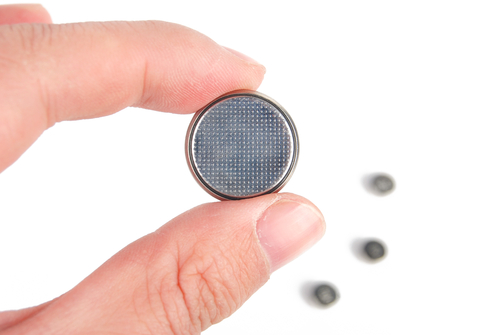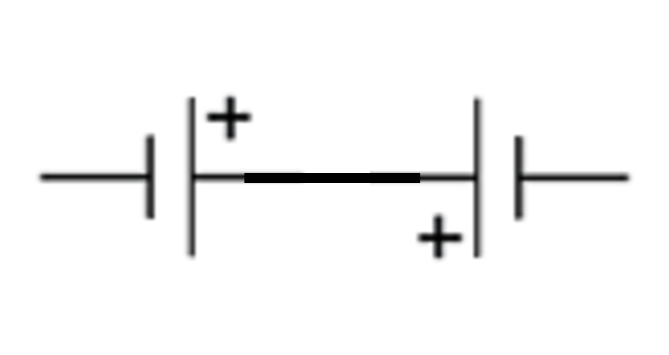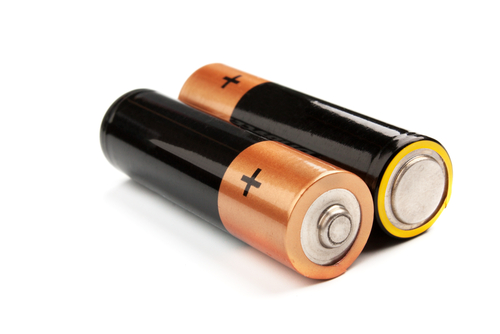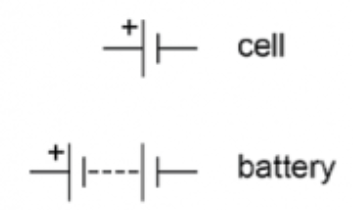You will have many batteries in your home - in torches, game controllers, children's toys and so on.

Let's learn about batteries, as well as cells!
Batteries and cells
You might remember that there are two common power sources in simple circuits - batteries and cells. They have very similar circuit symbols.
A cell can provide electrical energy in a circuit. It is a single unit of a battery.
A battery is a device made up of multiple cells, working together. That's why the circuit symbol for a battery is similar to the symbol for a cell, but multiplied.
Often, if you see a small 'battery' like this, it is actually a cell.

There are lots of different types of cells and batteries, used for different functions. Batteries can power torches, laptops, and more.
How do we use cells and batteries in circuits?
In circuits, we can connect multiple cells or multiple batteries together to provide electrical energy. We can connect them as in this circuit diagram.

Batteries and cells have a positive terminal and a negative terminal. You might have noticed this when replacing batteries in TV remotes. If you use more than one battery or more than one cell, they have to be connected correctly.
Always connect batteries by connecting a positive terminal to a negative terminal. If you have two batteries that provide 1.5 V of potential difference each, and you connect them correctly in series, that becomes a total of 3 V of potential difference.
If you connect cells or batteries like this, they will not work.

How do cells and batteries work?

Cells produce electrical energy as a result of a chemical reaction. A chemical called an electrolyte is inside the cell, separating two metals.
When a circuit is connected, electricity runs through the chemical. A reaction causes chemical energy to be transferred into electrical energy, which then can be transferred in the circuit.
Chemicals in cells and batteries are dangerous and can cause harm. Don't ever try and open a battery, the chemicals could cause damage.
Batteries should be recycled properly, not thrown away. If they aren't disposed of properly, the chemicals can leak, which can have a negative effect on the environment.
.jpg)
Now let's try some questions!








